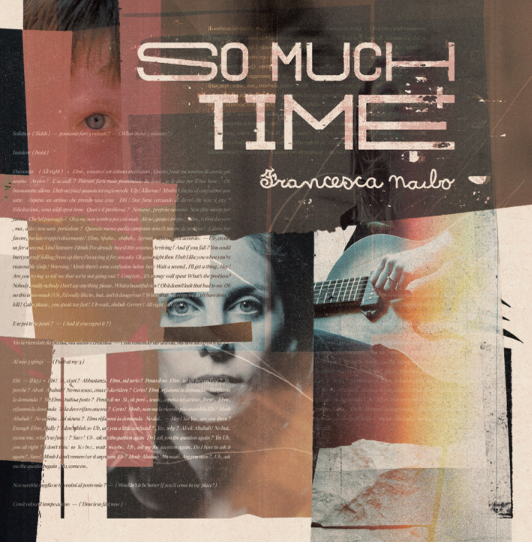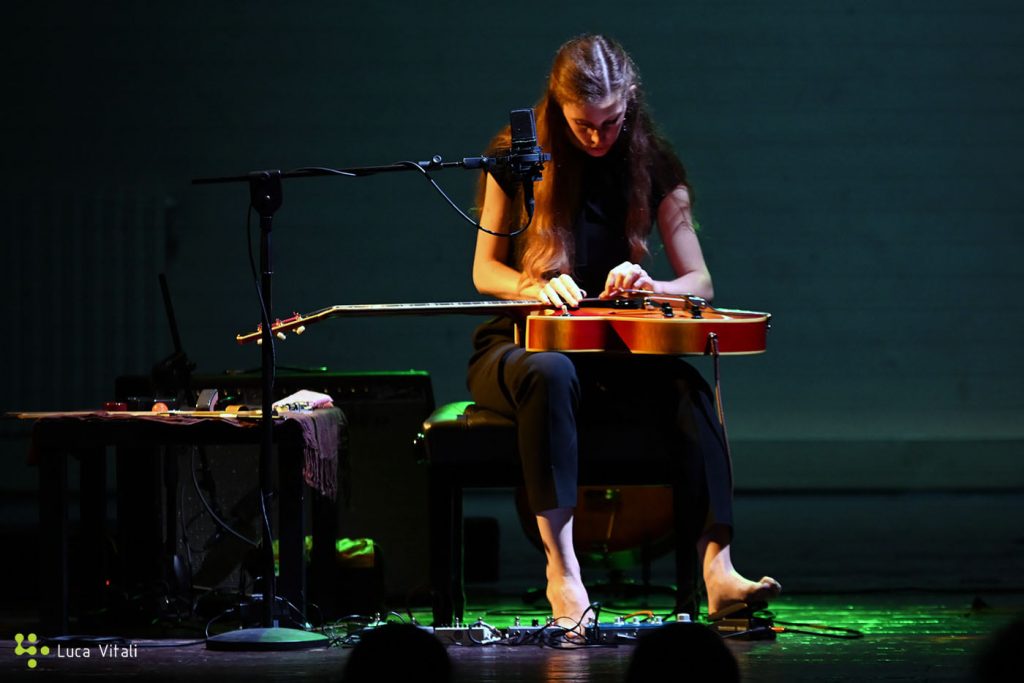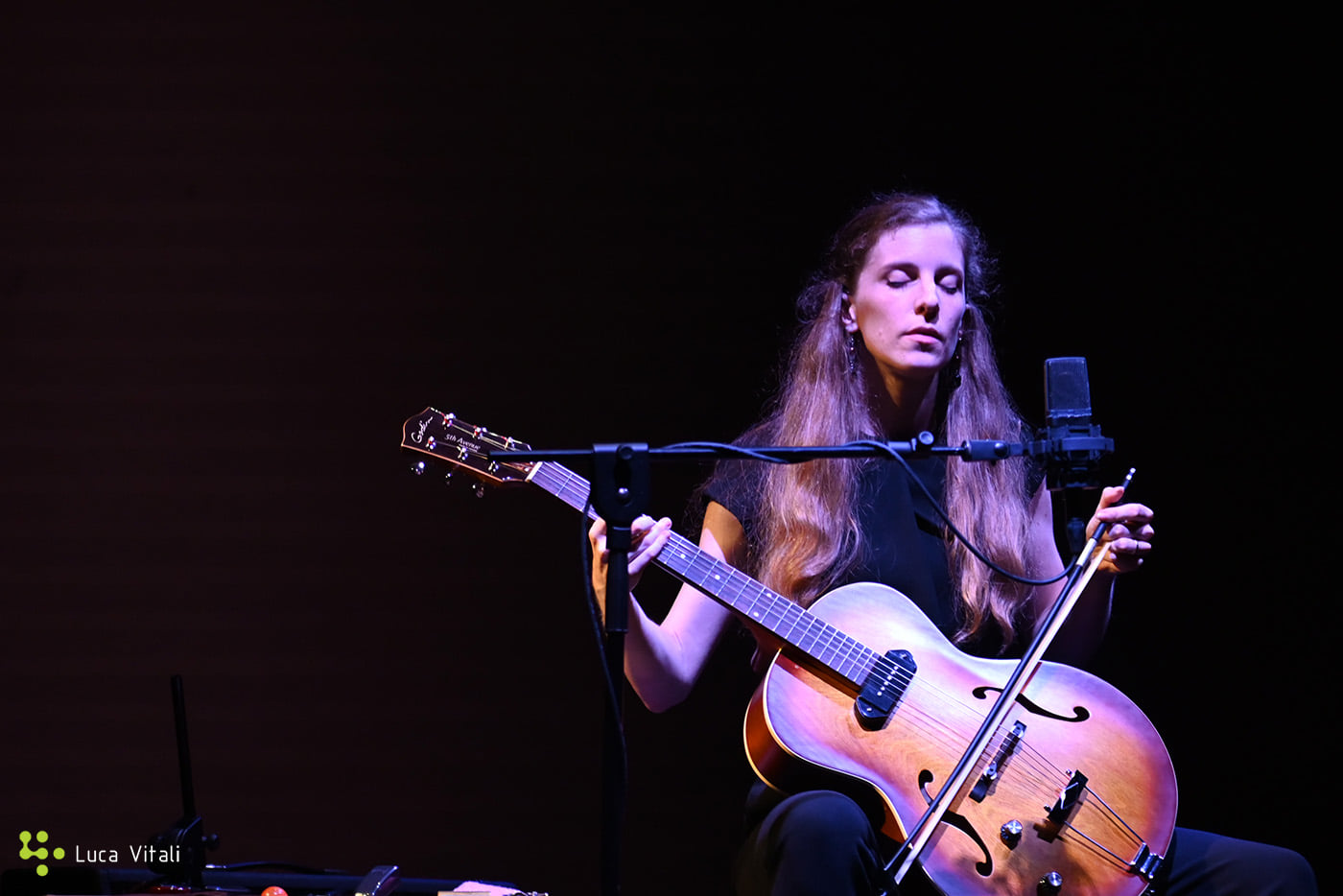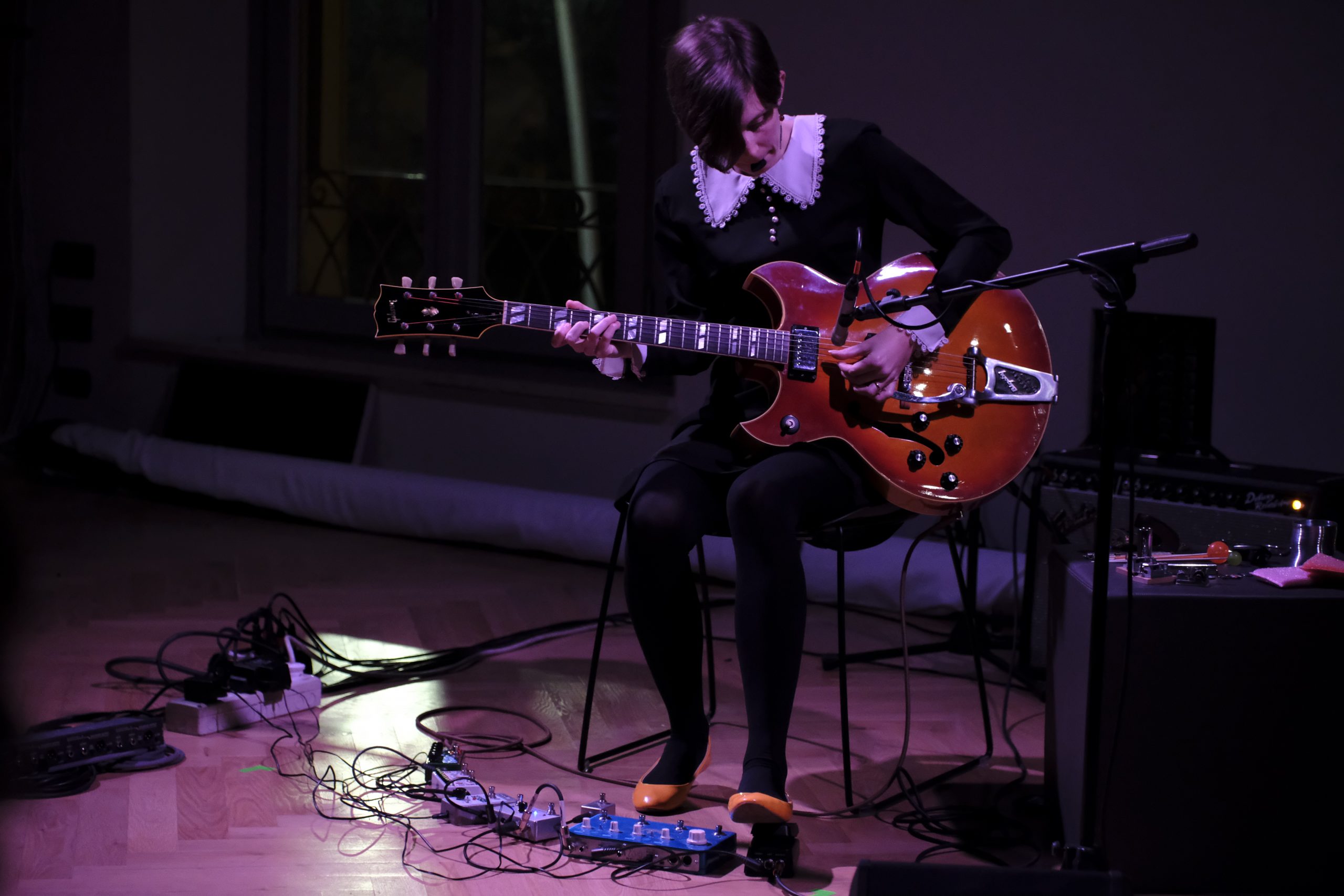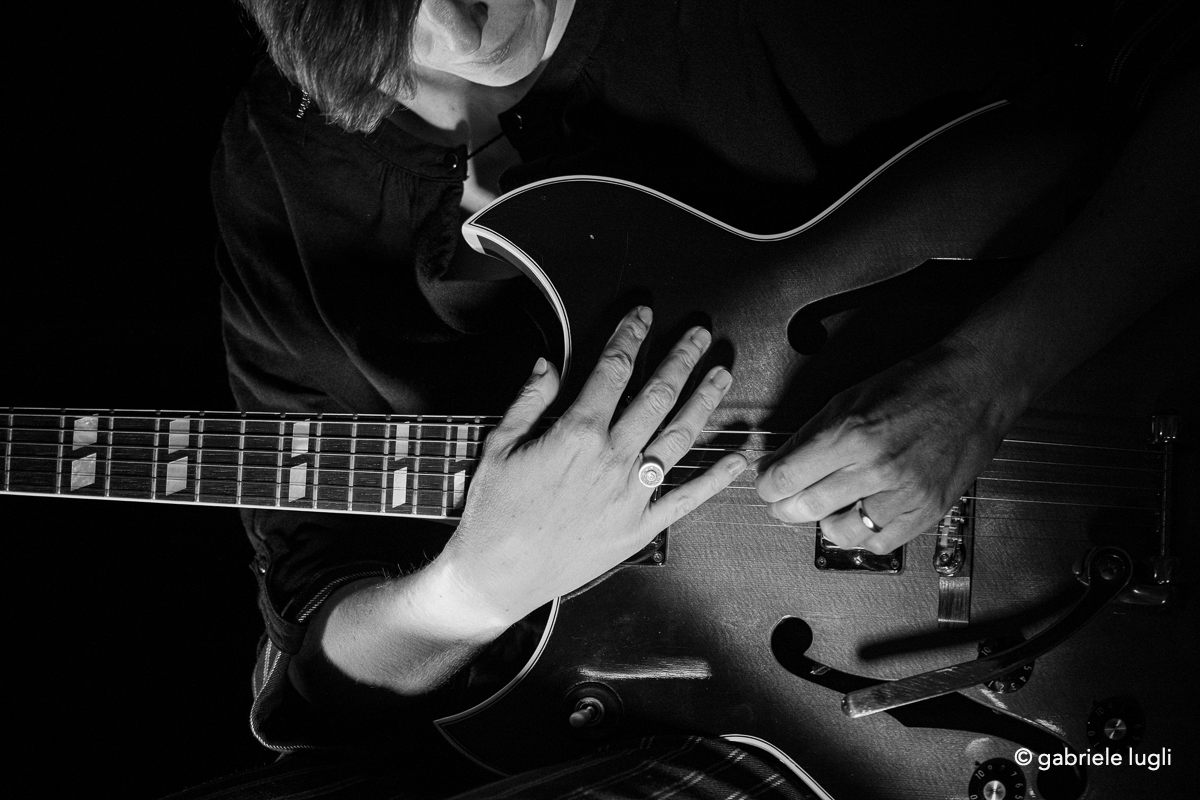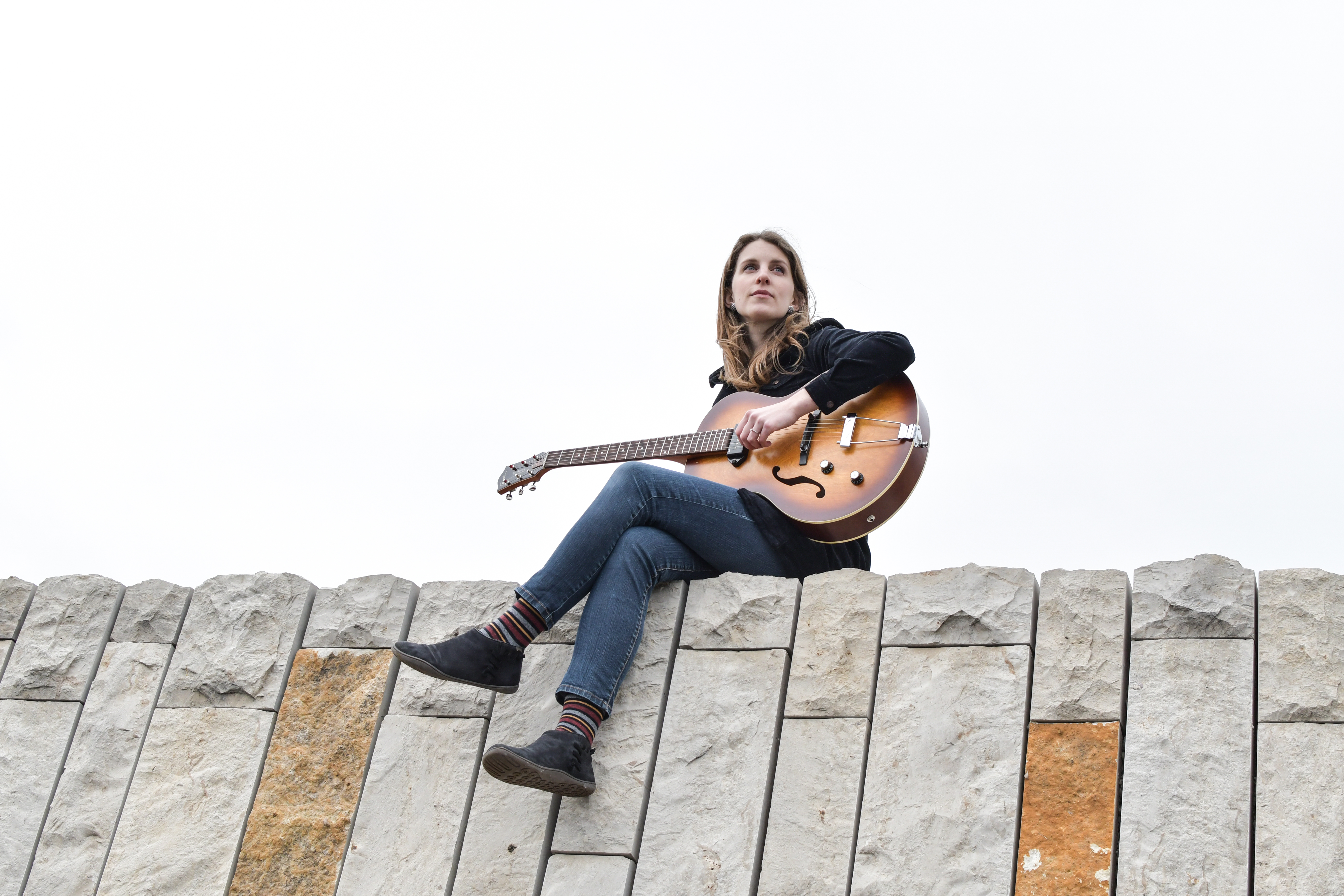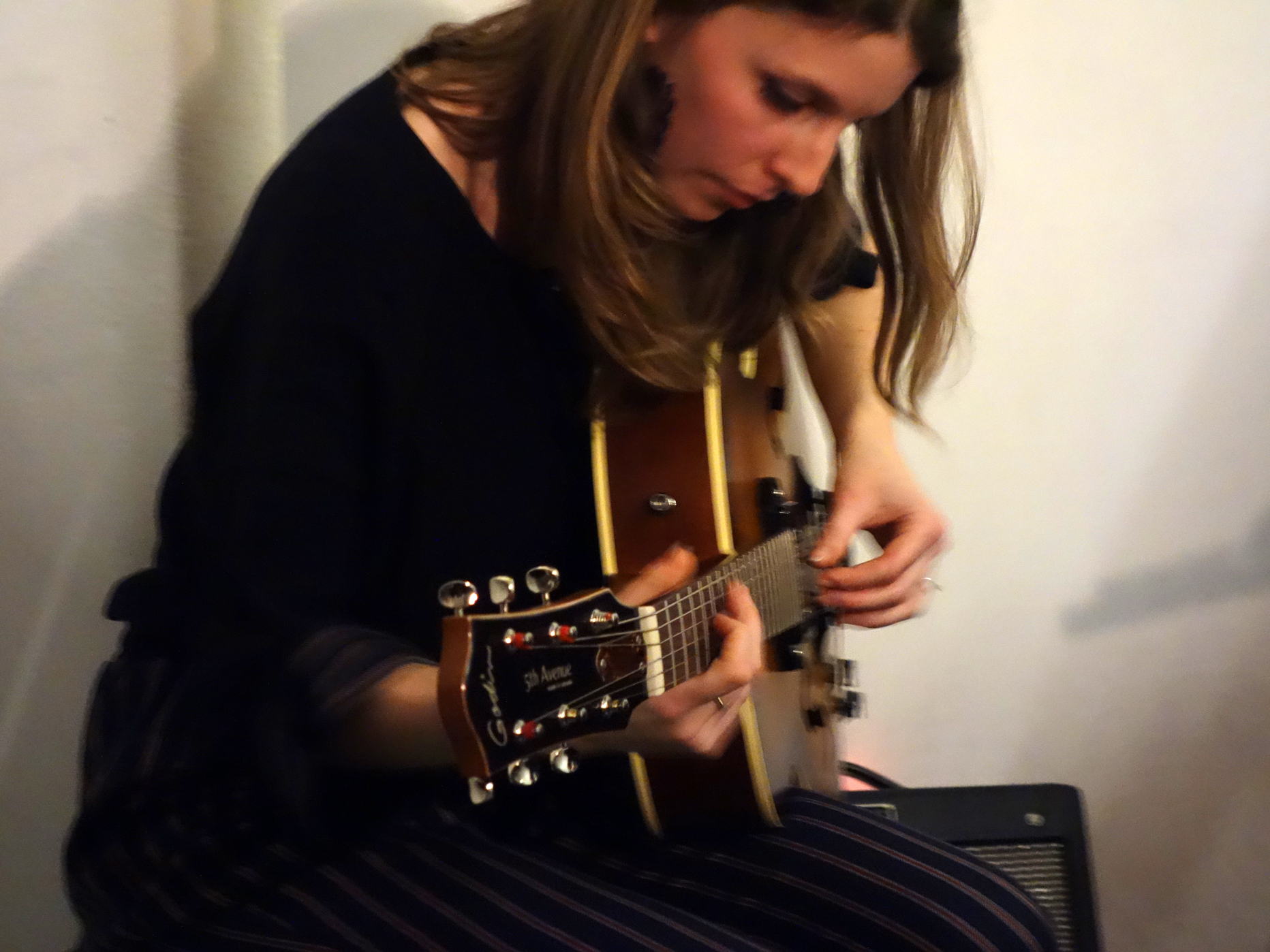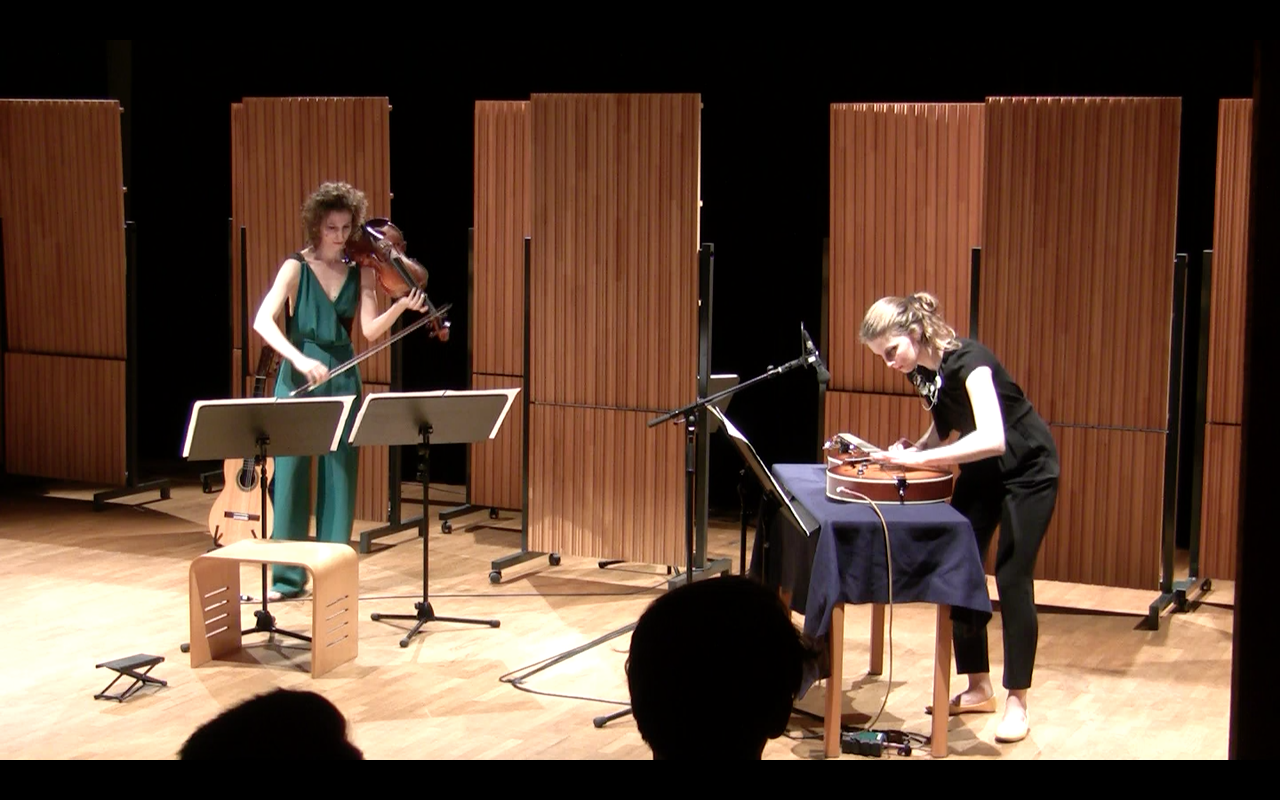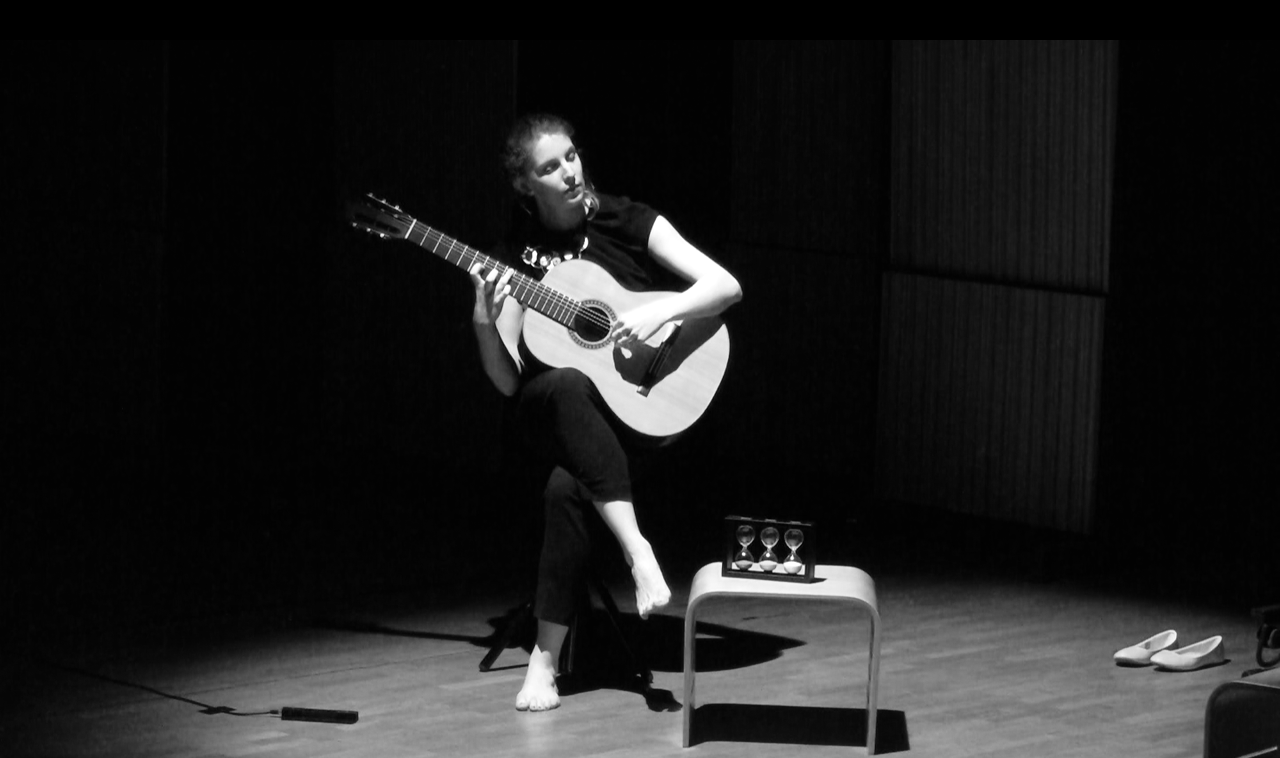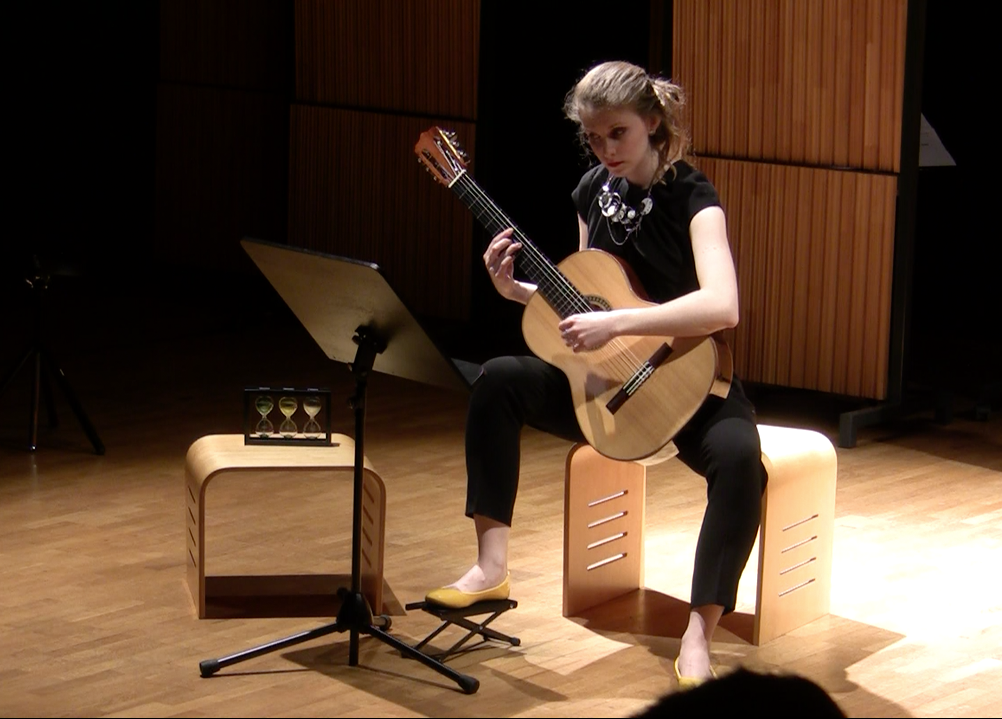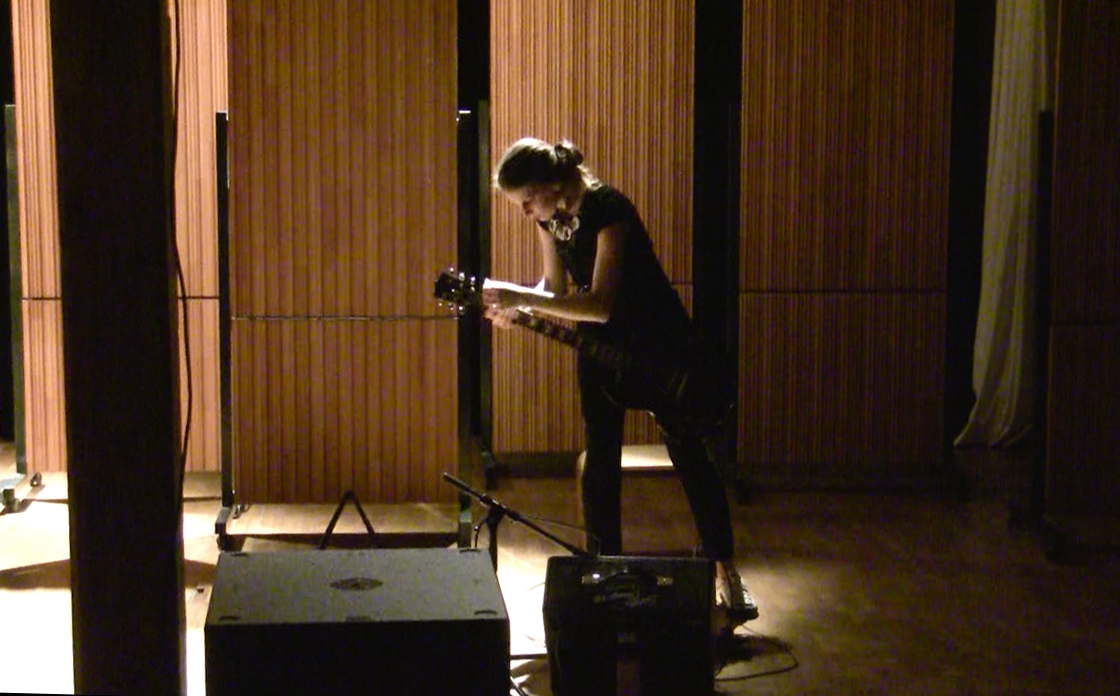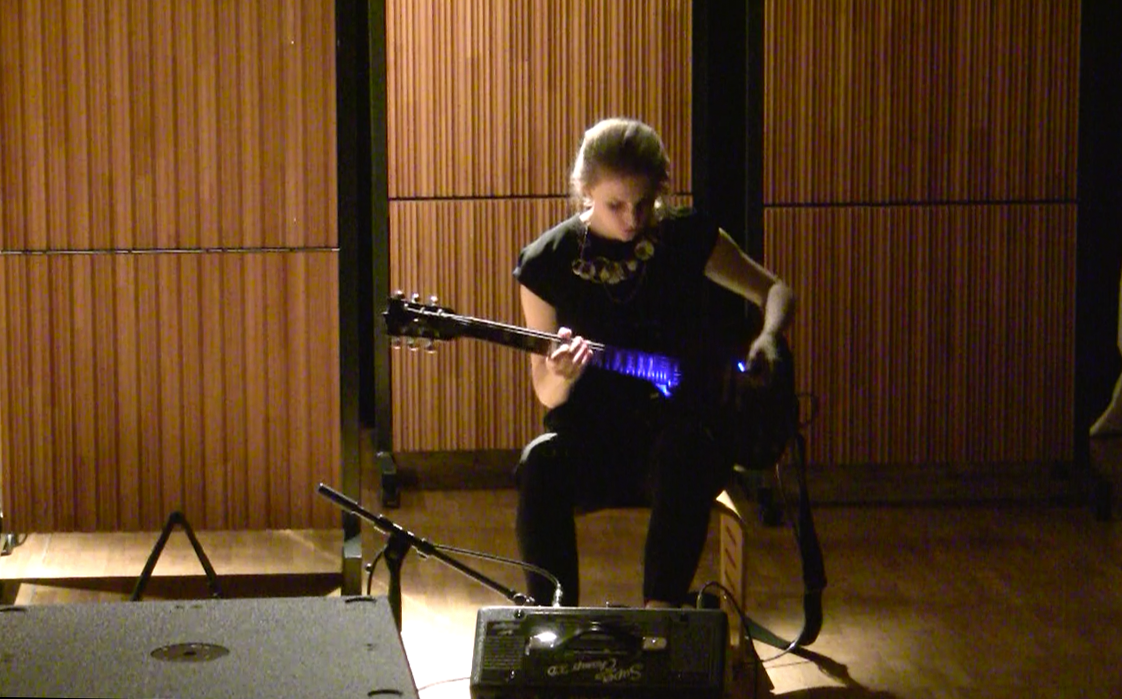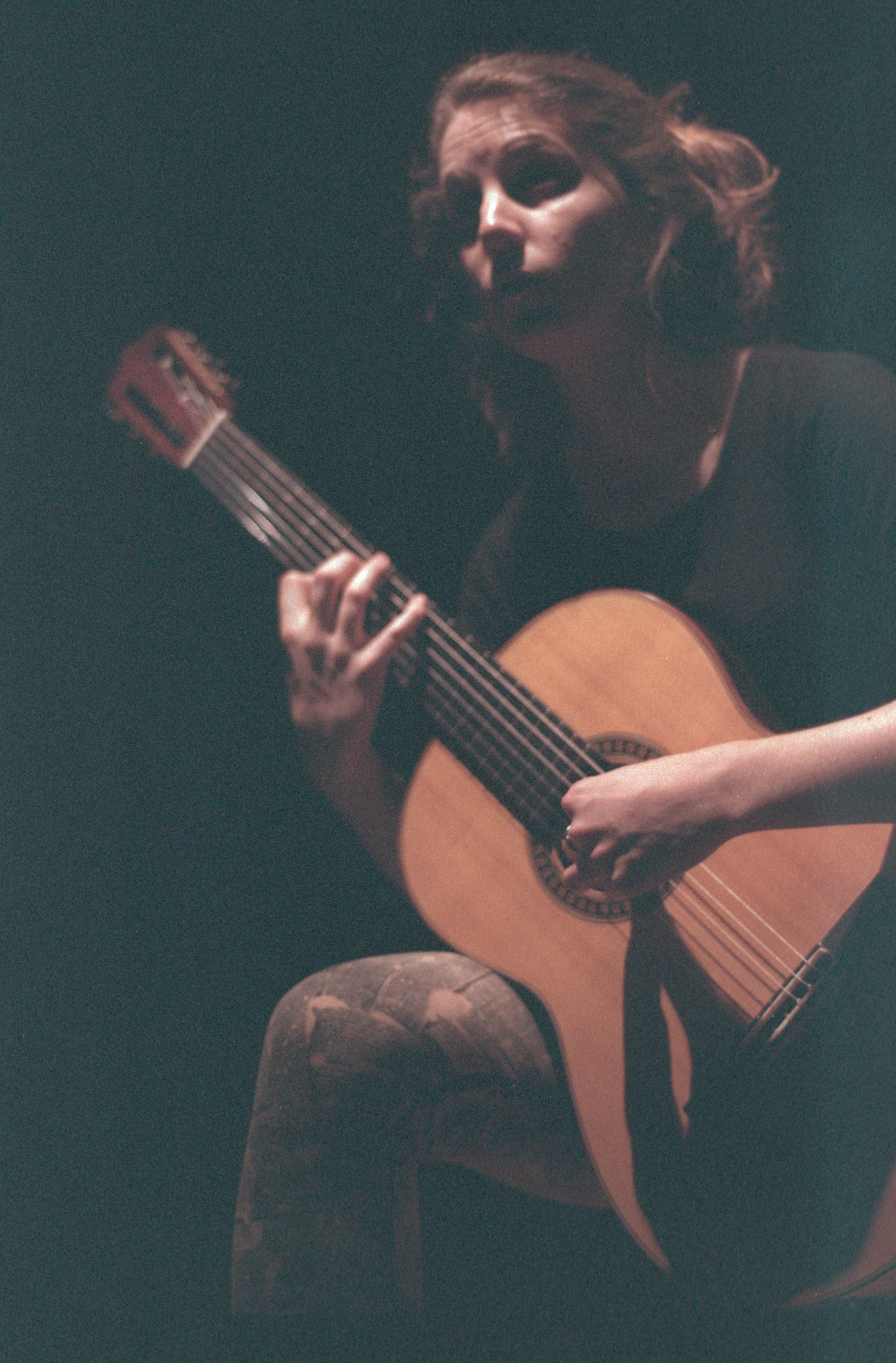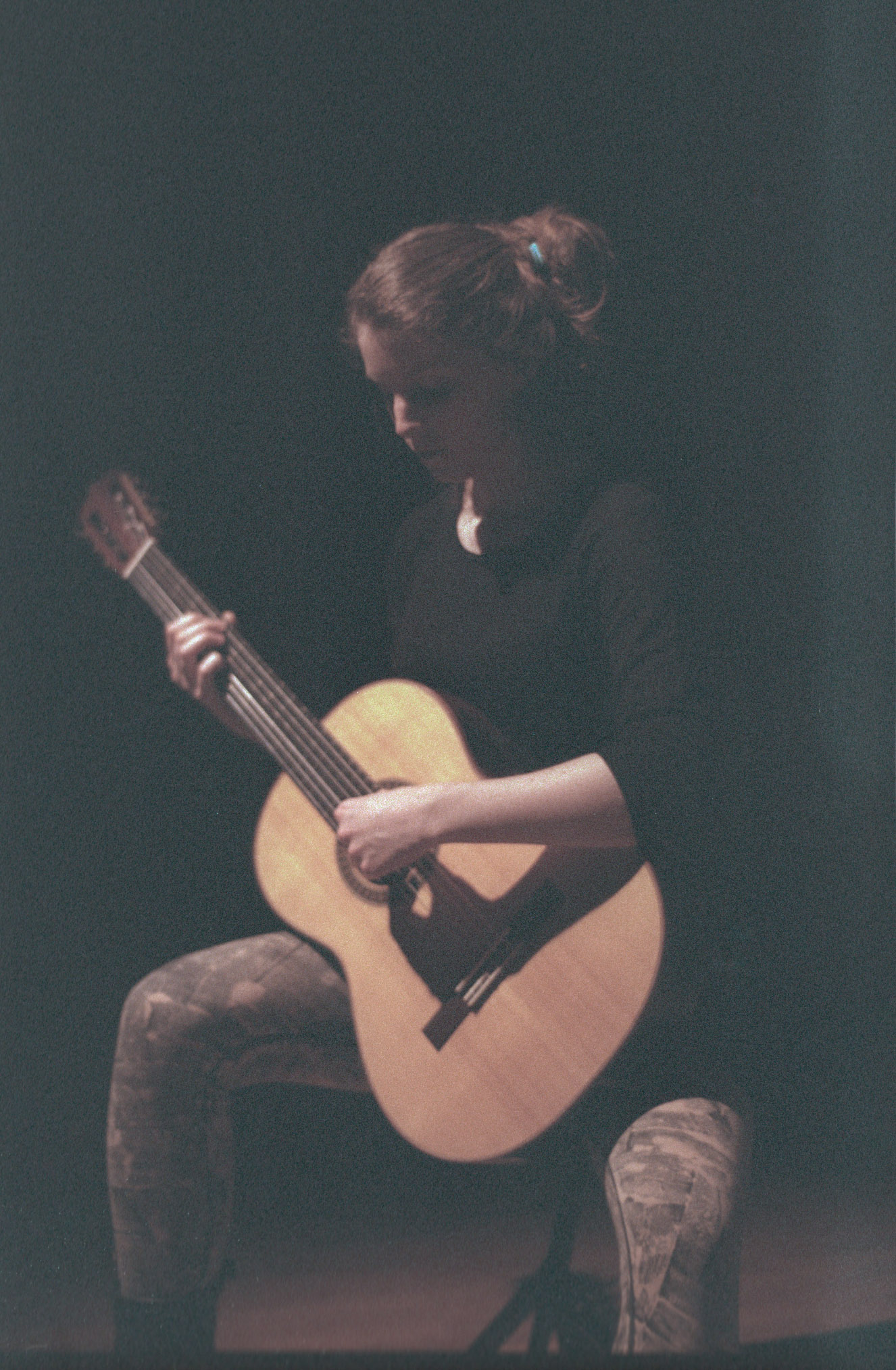Amazing, brave, excellent.
Alexander Schmitz, Jazz Podium
A cerebral and radical work.
Francesco Buffoli, Rockerilla
A disc of absolute artistic and musical depth.
Salvatore Esposito, Blogfoolk
A record where the voice becomes delightfully impertinent, childish or mature, and often follows and accompanies the somersaults of a reckless left-handed guitar. Francesca Naibo, intrepid navigator of rough and dangerous seas, with her ropes: but the landing is safe.
Guido Festinese, Il Manifesto
Moments of pure beauty arise, like the ending of Non sarebbe meglio se tu venissi al posto mio? which makes us understand how comparing ourselves with ourselves, even several years later, can bear incredible fruits in terms of finesse and perfection.
Vasco Viviani, The New Noise
The album
“So much time” is the second solo release by Francesca Naibo and comes two years after her debut album “Namatoulee” (Aut Records). This timeframe that separates the two records coincided with the pandemic period and so with a moment of deep personal reflection and artistic evolution of the musician.
Francesca Naibo looked at her past and her evolution in time and this lead her to rescue old tapes she recorded at home with a cheap recorder when she was around 8 years old. In this way she could listen again to her voice, understand its sonic and personal essence and enter in contact and dialogue with it after almost 25 years.
“So much time” is therefore a work about time: an impossible time that permits a dialogue between the child and the adult, a distant time of faded memories that emerge from memory, a time that flows with different speeds, a compressed and dilated time in our lives, a time that comes back in phases, a layered time of experiences and events..
Musically the work is based on improvisations realized in the recording studio. They were inspired to the thoughts and reflections on the theme of time and had a strong basis on the sonic features of the tapes used. These had been patiently selected before the recording days, in order to enter the studio with many tape fragments to juxtapose, superimpose, counterpose to music. In this way some of them introduce the tracks (like a sort of verbal comment), some others appear in the middle of instrumental passages, some others constitute a second instrument the guitar sets up a dialogue with.
Dialogue, mutual listening and contrast draw a relationship between the three voices present in the album: the child voice, the adult voice and the guitar voice. These three entities don’t always act simultaneously in the tracks but they are alternated during the narrative of “So much time”. In side A we even listen to a dialogue only between the child and the guitar, sometimes only to the guitar but the echo of the voice from the past still resonates despite its physical absence. In side B the three voices alternate themselves through the tracks and bring the dialogue to its maximum complexity. Their intangible signs are present everywhere, thanks to an approach to sound by the musician that has been strongly influenced by her recent practice and study of Deep Listening (a listening method invented and promoted by composer Pauline Oliveros).
Time is expressed also in the format of this album, because it will be printed on vinyl. Inside this material are hidden traces of the past derived from the tapes and traces of the present derived from digital audio. They will be impressed on an object that has never been part of the musician’s childhood but it possesses a symbolism in its form and his movement that are strictly connected to the slow and continuous passing of time.
Francesca Naibo uses an archtop guitar, various objects (so-called “preparations”), effects (delay, fuzz, sound retainer, ring modulator) and her voice. The musician comes from the world of classical music and this has a strong echo in the intense research for a mixture of the acoustic and electric sound of her instrument. Francesca deeply investigates sound with the purpose of going beyond the limits of the traditional instrument (hence the use of objects, noises, but also unusual tunings, that allow an expansion of the register), but at the same time trying to maintain her fingers solidly on a timber quality that is typically guitaristic.
The album comes with engaging graphics by Atharwa Deshingkar that includes the texts and photos of the artist as a kid and adult. It is available in vinyl and digital format on the Bandcamp pages of Francesca Naibo and Ramble Records.
Francesca Naibo
Francesca Naibo, guitarist from Vittorio Veneto (Italy) based in Milan, moves fluently across all the different conjugations of the guitar, from the classic, the electric, to the fretless and the pedal steel. Involved in the research for solo performance, she is focused on exploring sound in the divergent yet sonically similar fields of free improvisation, contemporary music and classical repertoire. She’s particularly interested in using both the acoustic and the electric nature of her instrument, adventuring from roaring drones till microscopic vibrations.
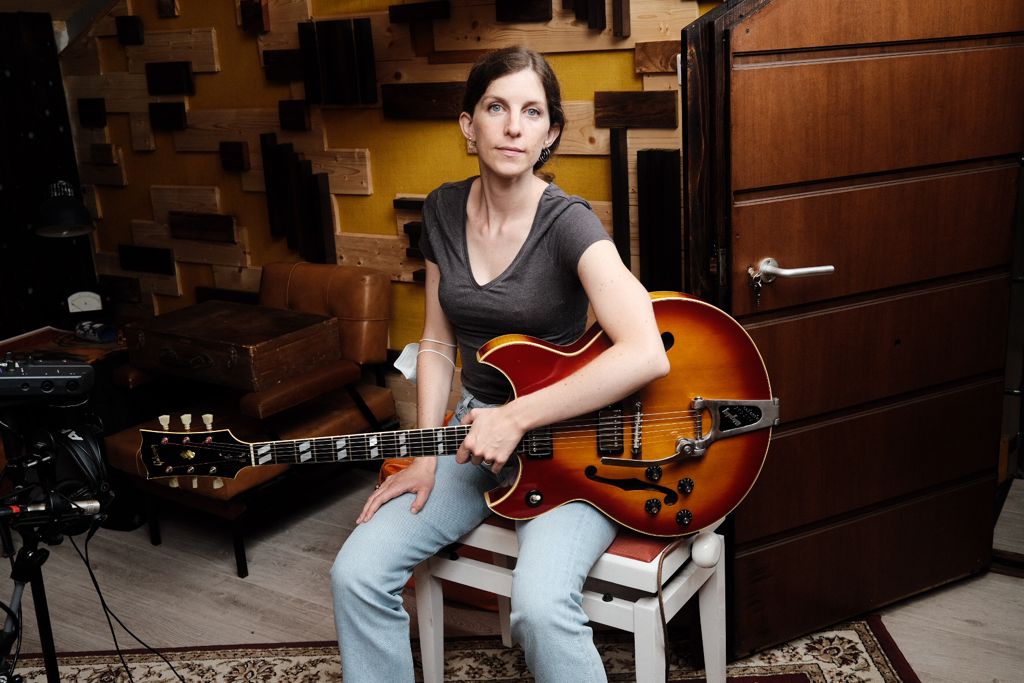
She studied in Venice, Milan, Bern and Basel graduating in classical guitar and free improvisation, and built collaborations with many European musicians, especially over Central and Northern Europe. She worked with important composers like Helmut Lachenmann and George Lewis and she realized the transcription of the “Exercises in Futility” by and in collaboration with Marc Ribot.
She recently gave lectures about improvisation and guitar at the “2nd Dublin International Guitar Symposium 2019: Back to the future” and at the “21st Century Guitar Conference 2021: Unconventional approaches”. In 2023 she published the article “Marc Ribot’s Exercises in Futility” (Proceedings of the 21st Century Guitar Conference 2019 & 2021, University of Denver).
In 2020 her first solo album “Namatoulee” was released by Aut Records and it received enthusiastic reviews. It was included in the “Albums of the year” list by the program “Late Junction” on BBC Radio 3. It was defined “masterful” by Il Giornale della Musica and “a postcard from the beyond, past the boundaries most guitarists usually accept” by A Jazz Noise.
In 20222 a piece by Francesca Naibo was included in the prestigious “I never metaguitar 6”, a selection among the best contemporary guitarists curated by Elliott Sharp for Klanggalerie.
She’s an active member of Milan Collettivo “Conserere” since 2020 and in 2023 she was included in Fall Equinox 2023 Cohort 6 of Mutual Mentorship for Musicians.
Besides her artistic activity, Francesca is a passionate teacher at the middle school “R. Franceschi” in Milan.
Interviews and live broadcasts
Interview and live performance at Piazza Verdi, Rai Radio 3
30 December 2023
Album credits
Total length: 28:18
All tracks improvised and composed by:
Francesca Naibo – guitar, voice, objects, effects, tapes
Recorded by Enrico Mangione and Luca Martegani at Nitön Studio in Barasso (IT) on 26-27 March 2022
Mixed and mastered by Enrico Mangione and Luca Martegani at Nitön Studio in Barasso (IT) in April 2022
Released by Ramble Records (RAM-108) on 02.11.2022
Graphics by Atharwa Deshingkar
Contacts
francesca.naibo@gmail.com
+39 348 0695011



